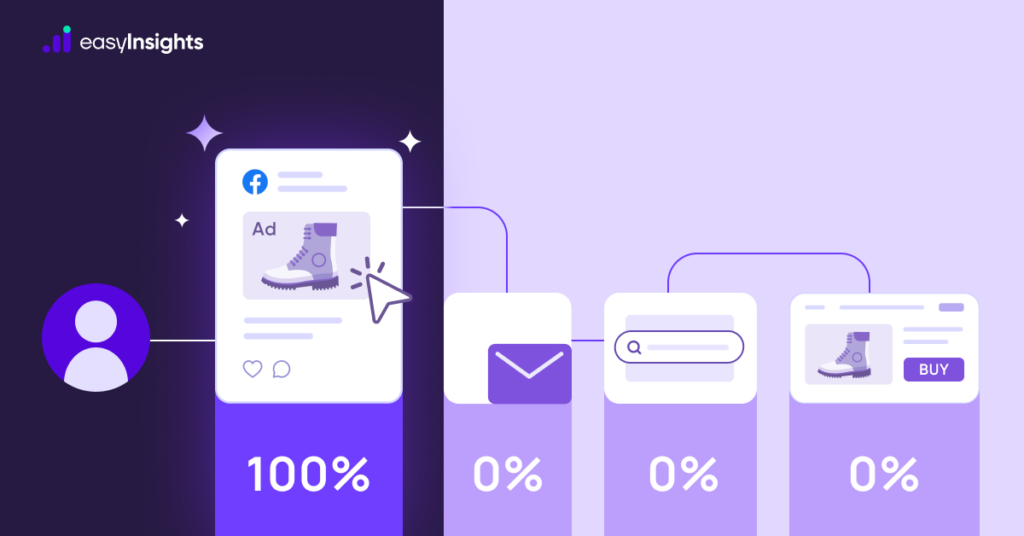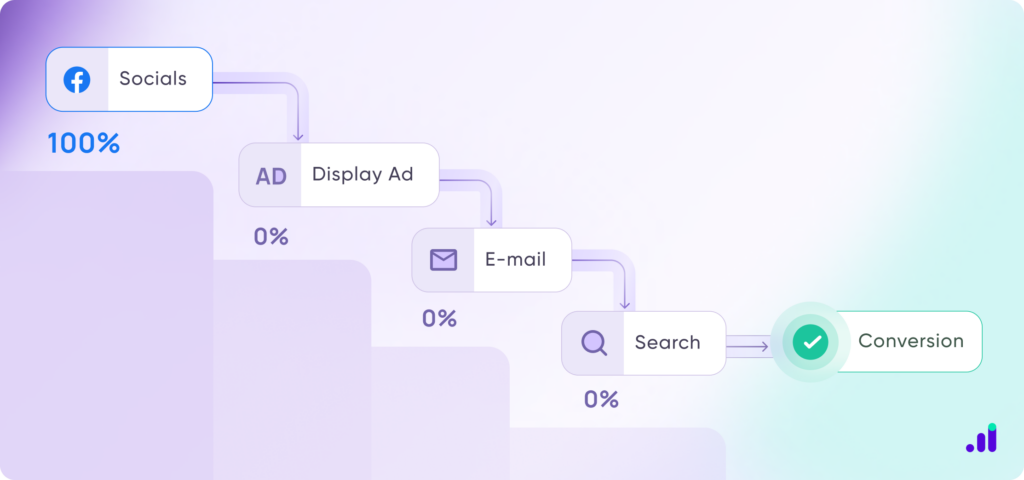
In the world of marketing, attribution is the process of identifying and assigning credit to the various interactions that contribute to a consumer’s decision to convert (purchase or take a desired action). This helps marketers understand which channels, campaigns, or interactions are most effective in driving conversions. Understanding attribution is crucial because choosing the right model can be complex. These insights are invaluable for optimizing your marketing efforts, revealing new opportunities, and identifying areas for improvement. The First-Click Attribution Model allows you to identify the initial interaction customers have with your brand and assigns 100 percent of the credit to that initial interaction.
This approach offers valuable insights into which channels effectively spark initial interest and engagement. While its simplicity and focus on awareness channels are clear benefits. It’s essential to recognize its limitations and use it as part of a broader attribution strategy. By understanding when and how to apply the First-Click model, marketers can better allocate resources, and optimize campaigns.
Jump ahead to:
What is the First-Click Attribution Model?

First-click and last-click attribution models are both single-touch attribution models that assign all the credit for a conversion to a single interaction. First Interaction, also known as “First-Click,” assigns full responsibility for a conversion to the initial contact your brand has with a consumer. For example, if a consumer discovers your company on Facebook, followed by a Google ad on a website while browsing later the customer receives an email encouraging further consideration, and finally does a Google search and makes a purchase. Here facebook receives full credit for all future sales. It does not matter if a buyer initially found you on Facebook, clicked on a search ad later, and then went directly to the website. In this scenario, Facebook is given full credit.
Advantages of the First-Click Attribution Model
The first-click attribution model has a few advantages that make it a useful tool for marketers, especially in certain situations. Here are some of the key benefits:
- Highlighting Awareness Channels: By focusing on the first interaction, you can identify which channels are most effective at generating initial interest and awareness. For example, if Facebook ads are identified as the primary driver of initial interest, you can allocate more budget to this channel to maximize reach and engagement.
- Easy to Implement and Understand: The First-Click Attribution Model is straightforward, making it easy for marketers to implement without requiring complex data analysis.
- Supporting Long-Term Strategies: This model emphasizes the importance of top-of-funnel activities, encouraging investment in channels that build long-term brand recognition. By understanding the effectiveness of initial touchpoints, marketers can develop strategies that focus on long-term engagement.
- Ideal for Small Businesses: Small businesses with limited resources can benefit from its simplicity and clarity in identifying which channels drive initial interest.
Disadvantages of the First-Click Attribution Model
While the first-click attribution model has its advantages, there are also some drawbacks to consider:
- Ignoring Subsequent Interactions: By giving all the credit to the first interaction, this model overlooks the role of subsequent touchpoints that nurture and convert leads. This can result in an incomplete picture of the customer journey.
- Potential Misleading Insights: Sole reliance on this model can lead to an overemphasis on initial interactions, potentially undervaluing channels that play crucial roles later in the customer journey. This might result in misallocating marketing budgets, focusing too much on channels driving initial clicks while neglecting those that assist in conversion.
- Budget Allocation Issues: There’s a risk of over-investing in awareness channels at the expense of those that contribute significantly to closing sales. This could lead to a misalignment in resource allocation, affecting the overall effectiveness of marketing efforts.
Best Practices for Using the First-Click Attribution Model
Here are some best practices to consider when using the first-click attribution model:
- Combine with Other Models: For a more well-rounded understanding, using the First-Click model alongside other models such as Last-Click or Multi-Touch Attribution can help you gain comprehensive insights into the customer journey.
- Analyze Full Conversion Paths: Look beyond the first interaction and analyze the entire conversion path to understand the contribution of each touchpoint.
- Use for Awareness Campaigns: This model is particularly effective for campaigns aimed at increasing brand awareness and attracting new leads.
- Continuous Monitoring and Adjustment: Regularly review and adjust your attribution strategy based on performance data and evolving marketing objectives.
When to Use the First-Click Attribution Model
The first-click attribution model is a good choice in a few specific scenarios where understanding those initial touchpoints is most valuable. Here are some key situations where it shines:
- Brand Awareness Campaigns: The first-click attribution model prioritizes the initial touchpoint a customer has with your brand, offering valuable data on brand awareness efforts. By attributing conversions to this initial exposure, it sheds light on which campaigns are most successful at sparking early customer interest and introducing your brand.
- Long Sales Cycles: In industries with extended decision-making timelines, like real estate or B2B software purchases that may take weeks or months, first-click attribution offers valuable insights. Here, the initial touchpoint is a crucial foundation for the customer’s journey, laying the groundwork for future interactions and eventual conversion.
- Knowledge Base: If your marketing strategy heavily relies on Informative content, first-click attribution can be very beneficial for content such as blogs, Ebooks, or online seminars aiming to educate the audience. For informative content, the first click indicates a potential customer actively seeking information, suggesting a strong interest.
Additional Reading: Which Attribution Model should you be using for Google Ads
Implement First-Click Attribution with EasyInsights!
The First-Click Attribution Model is a powerful tool for understanding the impact of initial interactions on the customer journey and optimizing brand awareness efforts. Highlighting the channels that effectively generate initial interest, supports long-term marketing strategies, and simplifies attribution analysis.
Additional Reading: How John Jacobs increased revenue 3x by using First-Click Attribution Model
However, to ensure a balanced perspective, it is crucial to use this model in conjunction with other attribution methods. Analyze the full conversion path, and continuously monitor and adjust strategies. This approach allows marketers to allocate resources effectively and optimize campaigns across all customer journey stages.
To address these attribution challenges, solutions like EasyInsights can be valuable. EasyInsights leverages server-side tracking to gather first-party data, providing detailed insights and robust analytics. This can help in implementing a comprehensive attribution strategy for your marketing efforts.
To know more, book a demo today!









